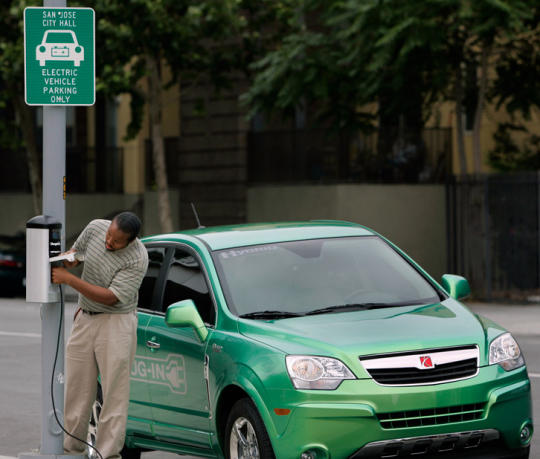I'm studying the market for plug-in electric vehicles and it sure does remind me of the wireless world of the 1980s. Back then there were air interface specs of all sorts. For those who love standards, there were plenty to choose from. And now with pevs, it's time for more fun.
Ready?
When it comes to charging plug-in electric vehicles, there's a small learning curve to overcome. You see, there's Level 1, Level 2, and Level 3 charging. There are also modes. There's Mode 1, Mode 2, Mode 3, and Mode 4. Mode 4 usually equals Level 3, but it depends on where you are. At times Modes 2 and 3 cover Level 2, but Mode 1 is almost always the same as Level 1, but sometimes Mode 2 is Level 1. But not in France, Japan and parts of the U.S. and some cities in China, depending on what car you drive. And for clarity, there are connection cases. There's Case A, Case B, and Case C. Case B is often Mode 3 which might be Level 2, and C is direct, not alternating you see. And though "Case A" sounds like it's the best case yet, it's actually the worst you can get. (Oh, yea, and before I forget: that case can be 110 or 220, which are actually 120 or 240, again it depends.)
Where do you go to juice up your new e-bucket? Well, there are EVSEs, charging points, charging stations, charging piles, and charging locations. They are all the same, except sometimes they aren't, especially in China. Charging stations are charging locations. Or they might be points or piles or plugs or ports. Pick your poison. You can go to public stations at private locations, or private points at public places. You can pay with points, or you can juice up gratuit. That means free to you and me.
OK, so that's just the semantics of charging. The words. The terms. It's WiFi vs. IEEE 802.11*. It's 4G vs. LTE. It's just like that. But the plug itself offers some more challenging facts. There are connectors and couplers, pistols and cores, and so, so much more.
Ready? You might have an AC-based SAE J1772 charger but could step up to a DC-based unit using the included CHAdeMO cable. (If it's not included, just charge it.) Of course there are proprietary solutions like Tesla's Supercharger. Forget stepping up, there you might want to step down, so get an adapter to use all the slow Level 2's in town.
Well, we all have our types, and so do these cars. There's Type 1 and 2 meaning very different things, there's Type 3 and 4, yes there are plug specs galore.
Then there's AC and DC, and the number of volts. (Tesla developed AC, but Tesla uses DC, somewhat ironically.) There's slow and there's fast, but nothing between. Although there actually is. No it's not easy being green.
Just like the old days of the cellular world, PEV charging has the same mess of specs and terms. There are coverage maps, there are coverage gaps. There's roaming, and dead zones, and specs made of alphabet soup. And there are the early adopters who put up with all this poop.
It's not always easy being green. Why can't these things just use USB?
The industry needs some global standard leadership. And some clever promoter group to boot, to give us nicer terms.

No comments:
Post a Comment